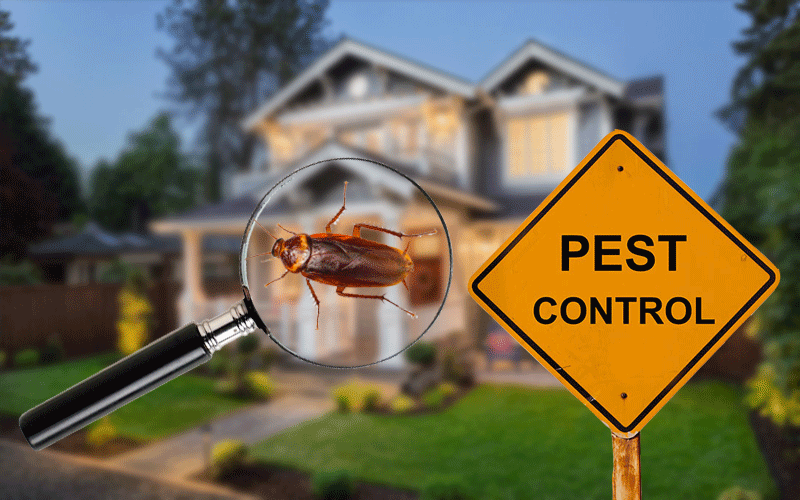Expert A1 Charlotte Bed Bug Exterminator - High Quality Solution Ensured
Wiki Article
Bed Pest Treatment Breakdown: Contrasting Chemical Vs. Non-Chemical Solutions
In the realm of pest control, specifically when handling the consistent issue of bed bugs, the choice in between chemical and non-chemical treatment solutions can be an essential one. Both techniques use distinct benefits and drawbacks, affecting elements such as performance, safety factors to consider, and general price. By taking a look at the nuanced information of each technique, a more clear understanding of which path to go after in addressing a bed insect infestation can be obtained.Effectiveness of Chemical Treatments
Chemical therapies for bed bug invasions have actually been commonly identified for their rapid and powerful effectiveness in getting rid of these insects. When taking into consideration the effectiveness of chemical treatments, it is critical to understand that they can supply a quick and extensive service to a bed insect trouble. Professional exterminators often count on pesticides to target bed pests at various stages of their life cycle, including adults, nymphs, and eggs. These chemicals usually function by interrupting the bed pests' nerve system, leading to paralysis and ultimate death.Moreover, chemical treatments have the benefit of supplying recurring impacts, implying that they can continue to remove bed pests also after the preliminary application. This residual activity is specifically advantageous in combating any potential re-infestations. In addition, the quick action of chemical treatments can bring alleviation to individuals facing severe bed pest invasions, allowing them to reclaim control of their space swiftly.
Safety And Security Worries With Chemical Solutions
One vital element that needs cautious consideration when utilizing chemical services for bed bug treatment is ensuring the safety and security of owners and the setting. Direct exposure to specific chemicals utilized in bed bug therapies can lead to respiratory system concerns, skin inflammation, or other adverse responses, especially in people with pre-existing conditions or sensitivities.Moreover, the ecological effect of chemical services is another significant factor to consider. Some pesticides used in bed pest therapies may be harmful to beneficial pests, wild animals, and communities if they leach right into the soil or water supply. It is necessary to utilize chemical treatments deliberately, complying with safety and security guidelines, and taking into consideration much less harmful alternatives to mitigate these threats and make sure the efficient and risk-free administration of bed bug problems.
Benefits of Non-Chemical Techniques
Thinking about the prospective security worries and ecological influence linked with chemical remedies for bed pest therapy, discovering non-chemical strategies offers an encouraging choice with numerous distinct benefits. Non-chemical treatments are ecologically friendly, as they do not contribute to air or water contamination, making them a sustainable option for bug control.Furthermore, non-chemical solutions can be reliable in targeting bed insects, including hard-to-reach locations where chemical treatments might not pass through - A1 charlotte pest control companies. Approaches such as warmth therapy, vacuuming, vapor cleansing, and mattress encasements offer complete obliteration without the usage of dangerous chemicals.
Limitations of Non-Chemical Treatments

In addition, non-chemical treatments frequently call for several applications to achieve effective elimination. This can be time-consuming and might not constantly assure total elimination of all bed insects and their eggs, specifically in hard-to-reach or hidden places.
Furthermore, the success of non-chemical therapies heavily counts on proper execution and thoroughness, which can be challenging for people without expert proficiency. Poor application of non-chemical techniques might result in insufficient removal, bring about persistent problems and the need for extra therapies.
As a result, while non-chemical therapies have their advantages, it is vital to acknowledge these limitations and consider them when establishing the most efficient strategy for handling bed pest infestations.
Expense Contrast: Chemical Vs. Non-Chemical Options
Provided the constraints connected with non-chemical therapies, a vital aspect to examine A1 pest control charlotte nc bed bugs in the context of bed insect management is the cost contrast between chemical and non-chemical options. In comparison, non-chemical treatments like heat therapy or steam can be extra costly, with costs varying from $1,000 to $6,000 for a whole home. While the initial price of chemical therapies may appear lower, multiple therapies may be called for to completely eliminate the infestation, possibly enhancing the total expense.Conclusion

Considering the prospective safety and security concerns and ecological effect associated with chemical solutions for bed insect treatment, discovering non-chemical techniques presents an encouraging option with several unique benefits.Offered the limitations linked with non-chemical treatments, an essential element to evaluate in the context of bed pest management is the price comparison between chemical and non-chemical alternatives. In contrast, non-chemical therapies like heat therapy or steam can be extra expensive, with expenses ranging from $1,000 to $6,000 for an entire home. While the first cost of chemical therapies might seem reduced, multiple therapies might be required to completely eradicate the invasion, possibly increasing the general price.In conclusion, when comparing chemical and non-chemical bed pest treatment choices, it is crucial to consider efficiency, safety and security, benefits, restrictions, and price.
Report this wiki page